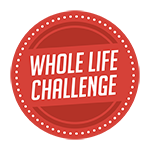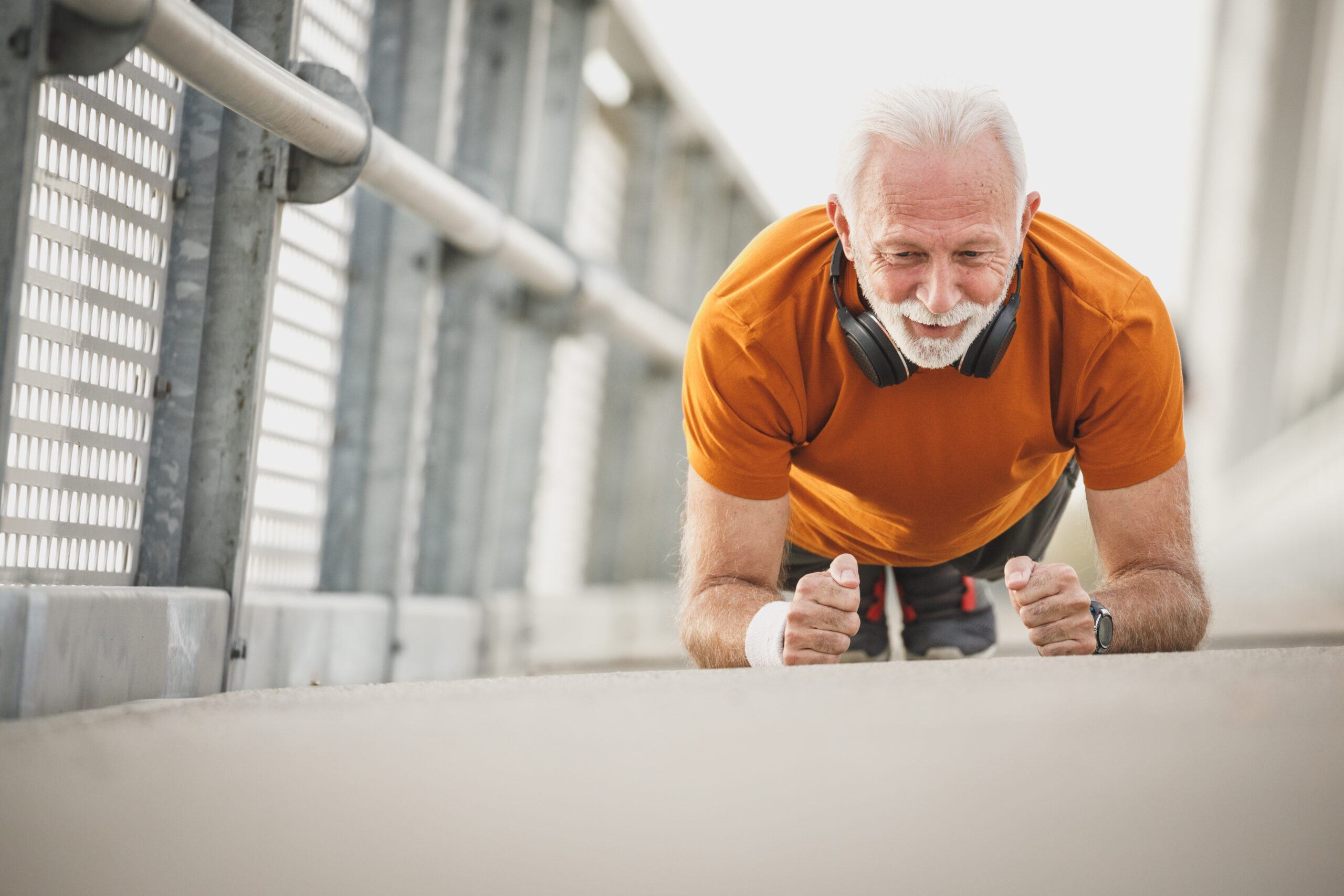 Reading Time: 6 minutes
Reading Time: 6 minutesAs we age, the desire to live vibrantly—free from aches, limitations, or the fear of falling—becomes a top priority. Enter functional fitness, the game-changing approach to exercise that’s helping people over 40, 50, and beyond move better, stay strong, and age with confidence. Unlike traditional workouts that chase aesthetics, functional fitness focuses on real-world movements to enhance mobility, balance, and strength for everyday life. Curious about how it works and why it’s trending in 2025? This ultimate guide dives into what functional fitness is, its benefits for aging well, sample exercises, and tips to get started—no gym required!
What Is Functional Fitness, and Why Does It Matter as We Age?
Functional fitness is all about training your body to handle daily activities with ease—think squatting to pick up groceries, reaching for a high shelf, or climbing stairs without a second thought. These workouts mimic real-life movements, targeting multiple muscle groups to improve strength, flexibility, balance, and coordination. For older adults, this approach is a lifeline to maintaining independence and preventing injuries.
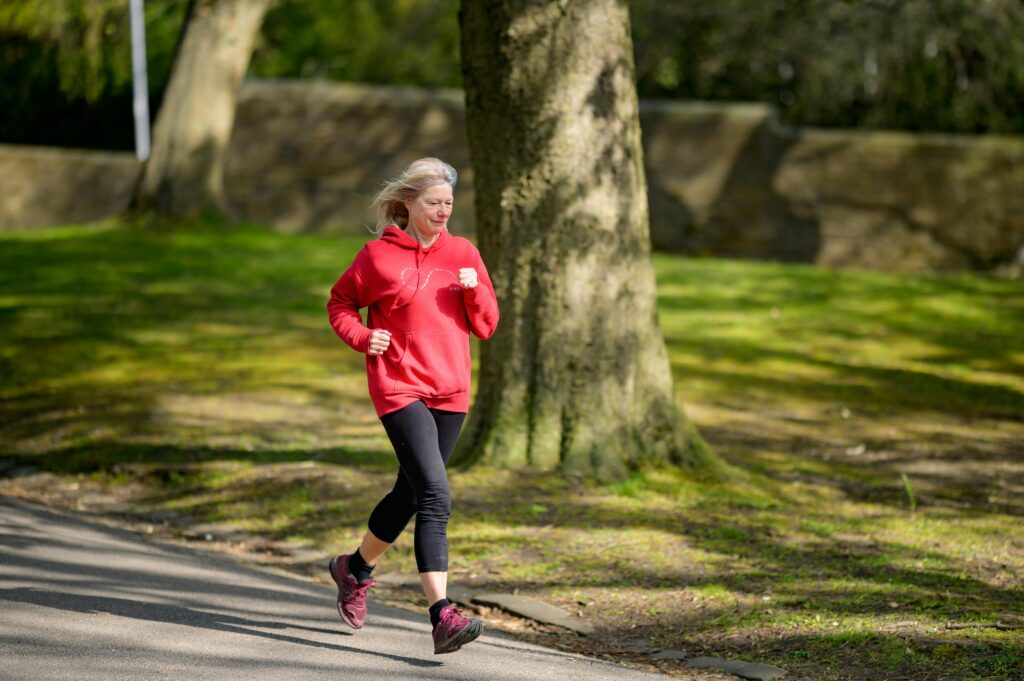
Aging naturally brings changes like muscle loss (sarcopenia), reduced bone density, and slower reflexes. According to the National Institute on Aging, adults lose 3-8% of muscle mass per decade after age 30, which accelerates after 60. This can lead to frailty, falls, or difficulty with basic tasks. Functional fitness counters these declines by building practical strength and stability, making it a cornerstone of healthy aging.
Why you should try it: Functional fitness is surging in popularity as baby boomers and Gen X embrace proactive wellness. With wearable tech tracking progress and hybrid fitness programs blending in-person and virtual classes, it’s easier than ever to prioritize movement that matters.
Related: 3 Proven Ways to Prevent Bone Loss Through Exercise
The Benefits of Functional Fitness for Aging Well
Why choose functional fitness over other workouts? Here’s what makes it a must for anyone looking to age gracefully:
1. Enhanced Mobility and Independence
Functional exercises like lunges or step-ups strengthen the muscles used in daily tasks, helping you stay agile. This means less reliance on others and more freedom to enjoy hobbies, travel, or play with grandkids.
2. Improved Balance and Fall Prevention
Falls are a leading cause of injury for older adults, with the CDC reporting that 1 in 4 seniors falls annually. Functional fitness incorporates balance drills, like single-leg stands, to sharpen coordination and reduce fall risks.
3. Stronger Muscles and Bones
Weight-bearing movements, such as bodyweight squats or resistance band exercises, combat muscle loss and osteoporosis. They stimulate bone growth and maintain joint health, keeping you sturdy.
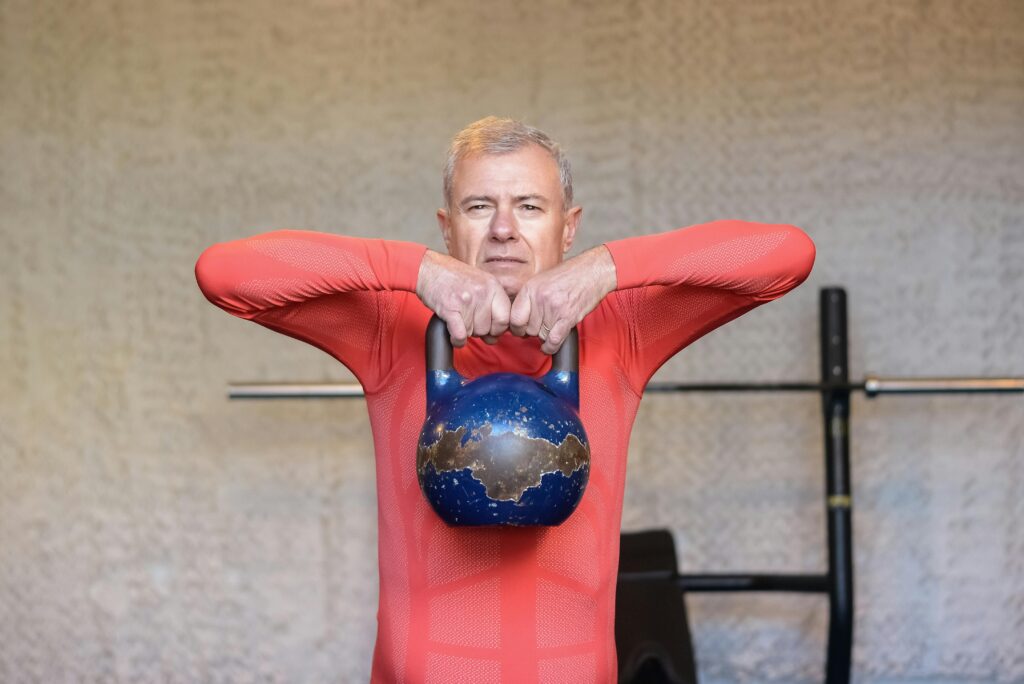
4. Boosted Confidence and Mental Health
Mastering functional movements builds self-assurance. Plus, exercise releases endorphins, reducing stress and enhancing mood—a win for mental resilience as you age.
5. Customizable and Accessible
Whether you’re a fitness newbie or a seasoned athlete, functional fitness adapts to your level. No fancy equipment? No problem—many exercises use body weight or household items.
Pro Tip: Pair functional fitness with a balanced diet to maximize results.
5 Functional Fitness Exercises to Try Today
Ready to move? These beginner-friendly exercises target key areas for aging well. Always consult a doctor before starting a new routine, especially if you have health conditions.
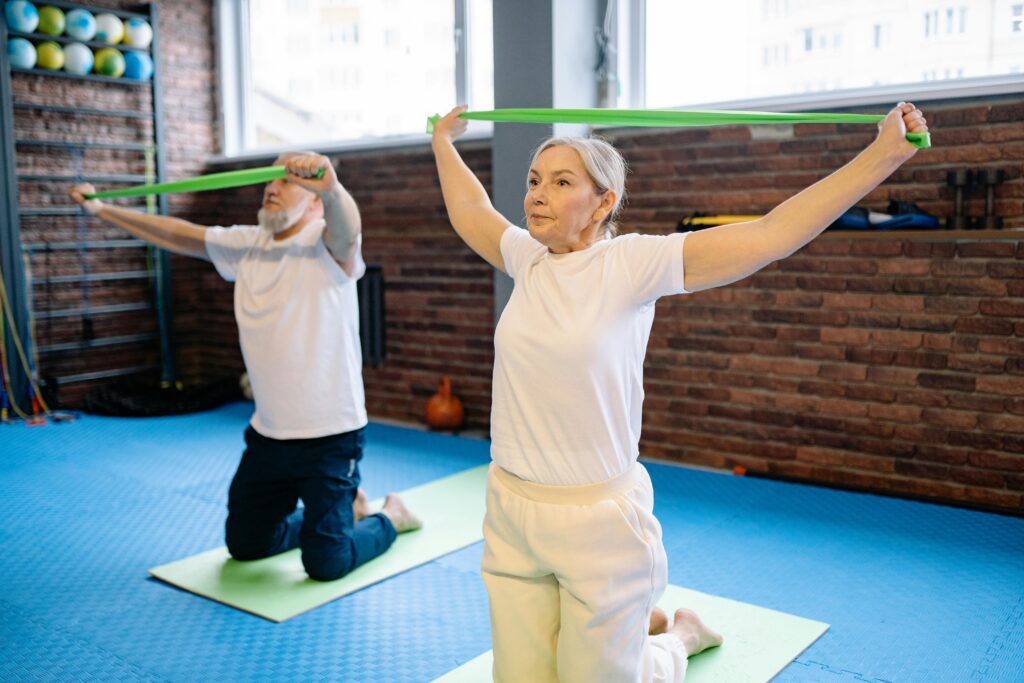
1. Bodyweight Squat
-
Why: Strengthens legs and core for sitting, standing, or lifting.
-
How: Stand with feet shoulder-width apart. Lower your hips as if sitting in a chair, keeping knees over toes. Rise back up. Do 10-15 reps.
-
Tip: Hold a chair for support if needed.
2. Single-Leg Balance Hold
-
Why: Improves stability to prevent falls.
-
How: Stand on one leg, lifting the other slightly off the ground. Hold for 10-20 seconds per side. Use a wall for balance if necessary.
-
Tip: Focus on a fixed point to stay steady.
3. Resistance Band Row
-
Why: Strengthens upper back and shoulders for better posture.
-
How: Anchor a resistance band to a sturdy object. Pull the band toward your chest, squeezing shoulder blades. Do 12-15 reps.
-
Tip: No band? Mimic the motion with a towel.
4. Step-Ups
-
Why: Boosts leg power for climbing stairs or hills.
-
How: Step onto a sturdy low stool or stair, lifting your body up. Step down and repeat, alternating legs for 10 reps per side.
-
Tip: Keep movements controlled to avoid strain.
5. Plank Hold
-
Why: Builds core stability for spine health and balance.
-
How: Rest on forearms and toes, keeping your body in a straight line. Hold for 15-30 seconds, engaging your abs.
-
Tip: Modify by dropping to your knees.
How to Start Your Functional Fitness Journey
Diving into functional fitness doesn’t require a gym membership or hours of free time. Here’s how to make it part of your routine:
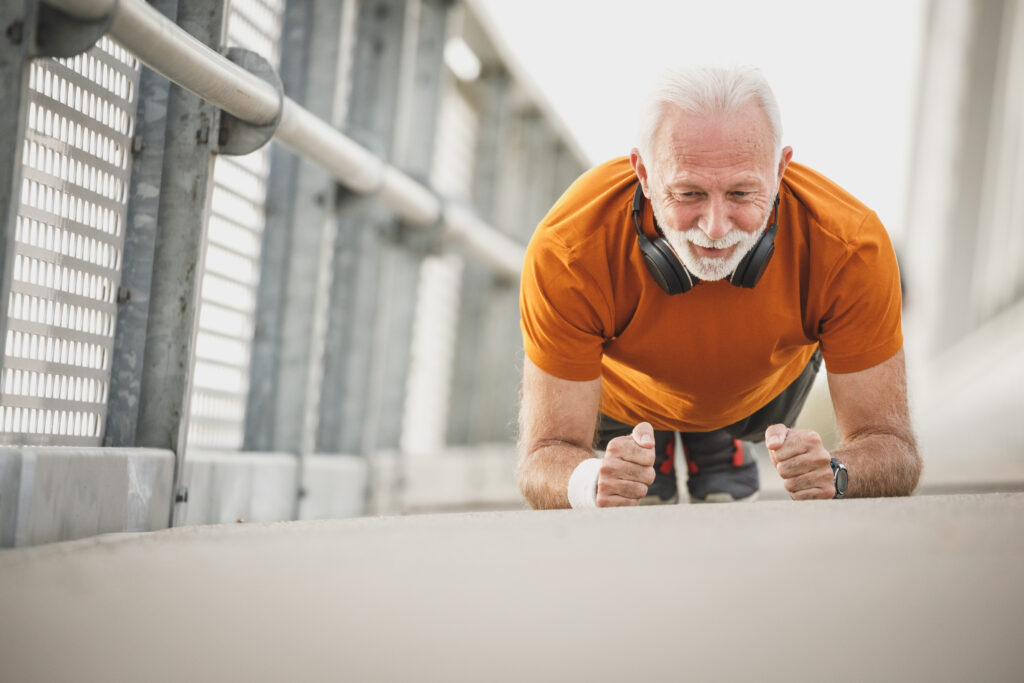
1. Set Realistic Goals
Start with small wins, like exercising 2-3 times a week for 20 minutes. Aim to improve specific tasks, such as carrying laundry without strain.
2. Find Your Format
-
At Home: Use online videos or apps for guided workouts. Search for “functional fitness for older adults” on YouTube.
-
In-Person: Join a local class like SilverSneakers or a community center program.
-
Hybrid: Many gyms now offer virtual and in-person options for flexibility.
3. Progress Gradually
Begin with bodyweight exercises, then add light weights or bands as you gain strength. Avoid overdoing it to prevent injury.
4. Track Your Progress
Use a journal or fitness tracker to note improvements in balance, strength, or stamina. Celebrating milestones keeps motivation high.
5. Listen to Your Body
Rest when needed, and modify exercises for comfort. Pain is a signal to pause and reassess.
Resource: Curious about low-impact workouts? Check out our “Explore the World of Yoga” series with Brett Larking from Uplifted Yoga.
Functional Fitness Myths, Busted
Misconceptions can hold you back. Let’s clear up a few:
-
Myth: “It’s only for young people.”
Truth: Functional fitness is ideal for all ages, with modifications to suit any fitness level. -
Myth: “You need a gym.”
Truth: Many exercises require no equipment—just your body and a bit of space. -
Myth: “It’s too intense.”
Truth: You control the pace and intensity, making it safe and sustainable.
Why Functional Fitness Is a Must-Try
In a world buzzing with wellness trends, functional fitness stands out for its practicality. It’s not about chasing six-pack abs but about thriving in your daily life—whether that’s gardening, traveling, or keeping up with family. With aging populations growing (the U.S. Census projects 1 in 5 Americans will be 65+ by 2030), staying active is more critical than ever. Plus, advancements like AI-driven fitness apps and virtual classes make it accessible to everyone, anywhere.
Fun Fact: Studies show functional training can improve quality of life by up to 30% in older adults, per the Journal of Aging and Physical Activity.
Your Next Steps to Aging Strong
Functional fitness isn’t just exercise—it’s a lifestyle shift to empower you at every age. Start small, stay consistent, and watch how everyday tasks feel easier. Not sure where to begin? Try one exercise from the list above, or search for a local class to connect with others. Your future self will thank you for moving better today.
Ready to dive deeper? Share your favorite functional fitness tips in the comments, or explore Three Steps to Training Smarter as You Pass 50 for more ways to live vibrantly!

